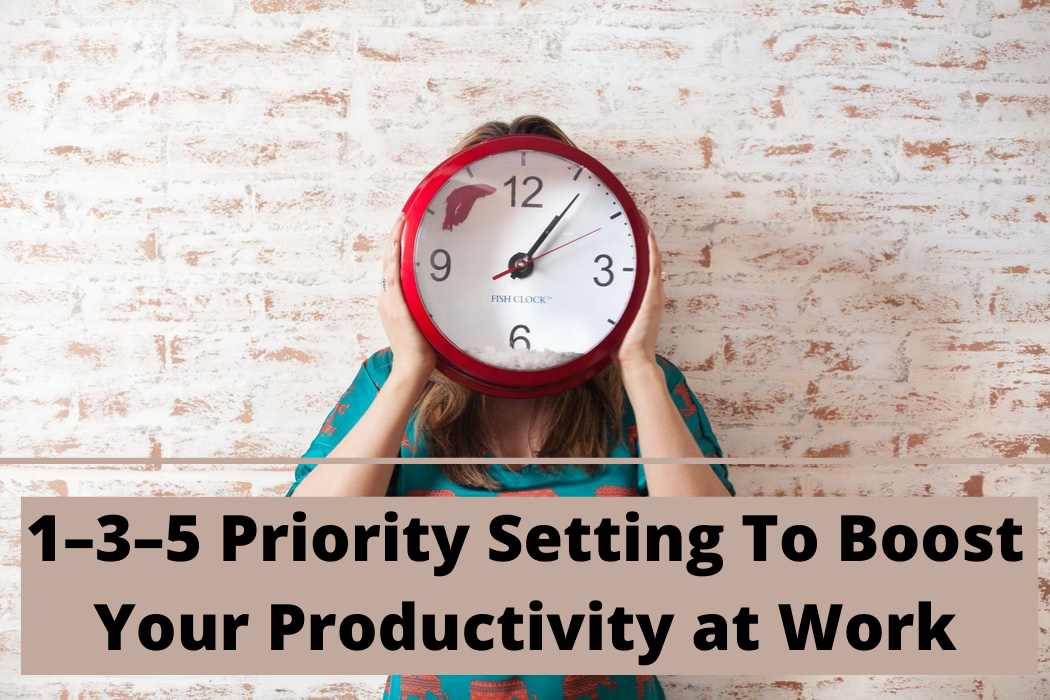Are you tired of setting a to-do list that’s too long and fail to tick all the tasks there?
Are you tired of setting your priorities for the day and then go to with regret at not having completed them all?
If you’re feeling overwhelmed with work and not sure which task to complete further, maybe the 1–3–5 priority setting method can help you overcome that feeling. This article is a beginner’s guide to this interesting new method called the 1–3–5 priority setting method to help boost your personal productivity as well as your productivity at work.
What is the 1–3–5 rule?
The 1–3–5 rule is simple: you need to commit to accomplishing three types of tasks every day to stay at your productive best: 1 Major Task, 3 Medium Tasks, and 5 Small Tasks.
This way, you can make progress on big projects and deliverables, complete all your small daily tasks, and also take care of any repeating daily commitments you might have. The reason this rule is effective is that it’s so simple.
How to make the 1–3–5 rule a daily habit?
Here are some tips on how you can make the 1–3–5 rule a daily habit and incorporate it into your lifestyle without consciously working too hard for it:
1. List out all your tasks for the week
Start on a Sunday and list every task you plan to accomplish in the upcoming week in your journal. Don’t think about how important they are or how urgently you need to accomplish them. The goal of this step is to get all the tasks in your head onto your planner or journal.
This is more of a brain dumping exercise and it serves the purpose of not having to remember your to-dos when you actually set yourself to achieving them the next week.
2. Divide them into groups
The next step is to group all your tasks into “major”, “medium”, and “small” tasks. If you’re not sure what criteria to consider while grouping them, here’s a guide to help you:
- If the task requires three hours or more to be completed, consider it a “major” task.
- If it takes one or two hours to be done, you can consider that task to be a “medium” task.
- If it takes thirty minutes to one hour, it’s a “small” task.
Aside from the time taken, you can also take into consideration the mental energy a task requires. Some tasks can be completed in a few minutes but take a huge toll on your energy.
3. Write your to-do list
Once you have all the tasks grouped, write a to-do list with one major task, three medium tasks, and five minor tasks.
You can either plan to-do lists for the entire week, or make your to-do lists for each day before you go to bed at night. Use a new journal to make this kind of list as it’s a radically different approach from your usual journal or to-do lists.
4. Start with the biggest tasks
When you’re starting your work for the day, you usually have the most energy and motivation. Starting with the most complex and time-taking tasks will help you get them completed, and thus start the day with a feeling of accomplishment.
5. Incorporate the Pomodoro technique
The Pomodoro technique is a great tool for boosting productivity. The concept is simple: you work in blocks of time (usually twenty-five minutes), interspersed with breaks where you can recharge.
Because you have those short breaks of five minutes strewn in so generously, you can get more work done in a short time. This helps you achieve more without feeling burned out.
6. Use technology
Get help from people who have experience dealing with your problem of not being productive enough. You can hire an accountability coach who will share helpful tips and tricks and also hold you accountable for your promise of sticking to setting the 1–3–5 method each day.
You can also get a habit tracker and mark each day on the calendar where you successfully managed to set your priorities for the day. Gamifying your habits can be a helpful way to get the most of this challenge and adopting a more productive lifestyle.
